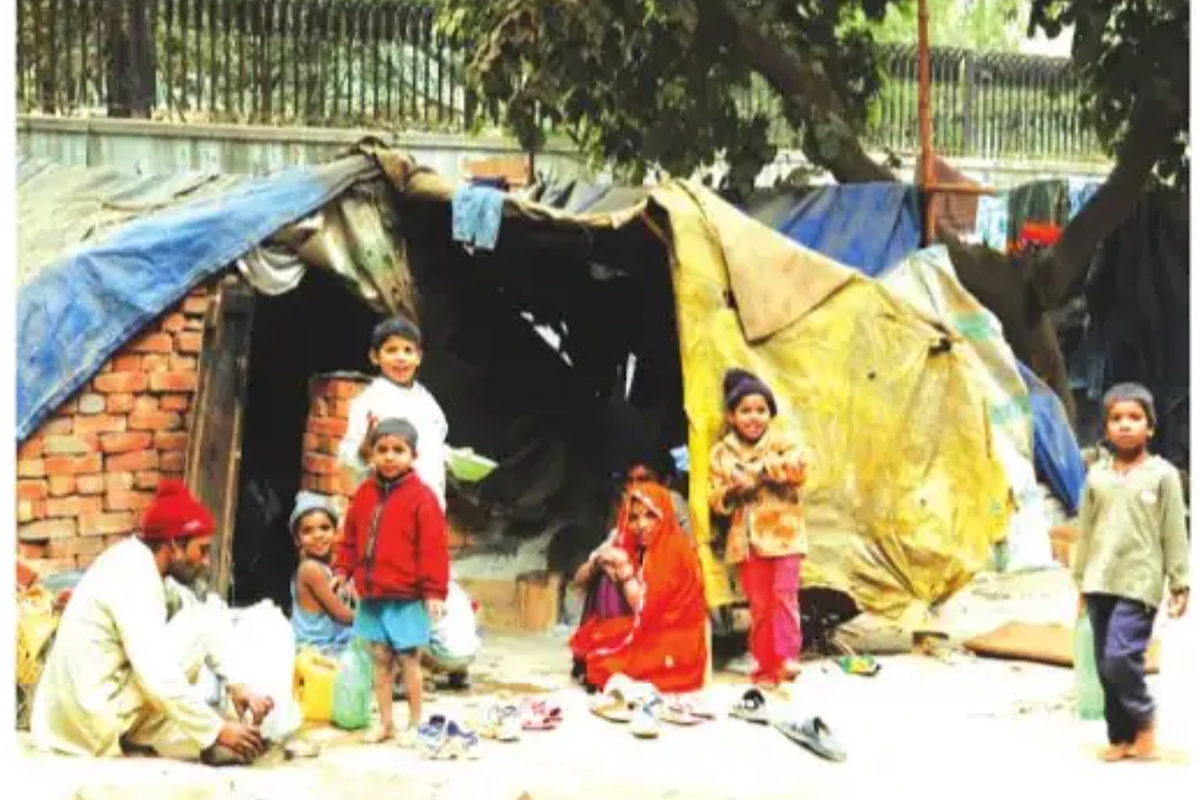PM to chair 9th Niti Aayog Governing Council meeting on Saturday
The meeting will have detailed deliberations on the role of states in achieving the goal of Viksit Bharat by 2047.
According to the report, the incidence of multidimensional poverty in India has plummeted from 29.17 per cent in 2013-14 to 11.28 per cent in 2022- 23.

Representation image
In a ray of hope amid the tumultuous times brought about by the Covid-19 pandemic, a recent report by NITI Aayog has shed light on a remarkable achievement – 24.82 crore Indians have emerged from the grips of multidimensional poverty over the past nine years. According to the report, the incidence of multidimensional poverty in India has plummeted from 29.17 per cent in 2013-14 to 11.28 per cent in 2022- 23.
While these figures paint a promising picture of progress, a closer examination reveals complexities that warrant a nuanced assessment. At the heart of this analysis is the Multidimensional Poverty Index (MPI), a tool designed to gauge poverty beyond the constraints of income alone. By considering factors such as health, living standards, and other non-monetary dimensions, the MPI provides a more comprehensive understanding of poverty’s multifaceted nature. The methodology employed in this report follows the globally recognized Alkire Foster method, emphasizing the need to look beyond monetary measures when evaluating societal well-being.
The multidimensional poverty index (MPI) serves as a commendable step towards redefining our understanding of poverty. By acknowledging that poverty extends beyond mere economic indicators, the MPI allows us to delve into the intricacies of human well-being. This approach is particularly relevant in the context of a country as diverse as India, where disparities in health, education, and living standards can be as significant as economic inequalities.
Advertisement
However, as we celebrate the achievements reflected in the NITI Aayog report, we must also recognize that the MPI, while a robust tool, has its own set of limitations. It relies on available data and projections, often unable to capture the real-time dynamics of societal shifts, especially in the wake of unforeseen global disruptions like the Covid-19 pandemic. The backdrop against which these achievements are measured is crucial. The report relies on pre-pandemic data from the National Family Health Survey (NFHS) until 2019-21, projecting trends into 2022 and 2023.
This approach, while providing insights into long-term trends, may not fully capture the significant disruptions caused by the Covid-19 crisis. The positive trends highlighted in the report are a testament to the resilience of communities and the efficacy of targeted interventions. Yet, in our pursuit of progress, we must not lose sight of the lessons the pandemic has imparted. The health emergency exposed vulnerabilities in our social fabric, and the repercussions were felt across sectors.
As we navigate the post-pandemic landscape, it is imperative to learn from these experiences, fortifying our commitment to inclusive policies that can weather unforeseen storms. The multidimensional approach to poverty reduction, as evidenced by the NITI Aayog report, should inspire a renewed dedication to building a society where the well-being of every individual is safeguarded against the challenges of an unpredictable world. The pandemic’s ramifications on education, health outcomes, and the implementation of government programmes tied to the MPI indicators cannot be ignored.
As the world grappled with the health emergency, child mortality rates rose, and nutrition levels witnessed a decline. The NITI Aayog projections, albeit based on sound methodology, may inadvertently overlook these medium-term setbacks, assuming that the pre-Covid progress continued seamlessly during and after the pandemic. Moreover, the aftermath of the Covid-19 crisis saw governments globally tightening their fiscal belts, and India was no exception. The tightening of government spending, especially in the aftermath of the pandemic, has inevitably impacted social sector schemes, potentially affecting the very programmes integral to poverty reduction.
The report’s positive findings in states like Uttar Pradesh, Bihar, and Madhya Pradesh – regions among the worst hit by the pandemic and funding cuts – raise questions about the sustainability and inclusivity of these gains. The tale of multidimensional poverty reduction in the face of adversity is both inspiring and challenging. On one hand, it showcases the resilience of communities and the effectiveness of targeted interventions. On the other hand, it prompts us to critically assess the long-term sustainability of these gains, considering the unforeseen disruptions caused by the pandemic.
In assessing the veracity of the NITI Aayog report, it is crucial to acknowledge the limitations inherent in projecting pre-pandemic data into a post-pandemic reality. The intricacies of the multifaceted nature of poverty demand a comprehensive and dynamic approach that adapts to the ever-changing landscape of global challenges. The report, while providing a snapshot of progress, should serve as a catalyst for more in-depth analysis and reflection. As we celebrate the millions lifted out of multidimensional poverty, we must also remain vigilant about the potential pitfalls that may compromise the sustainability of these gains.
The post-Covid era demands a renewed commitment to social welfare, an adaptive policy framework, and an unwavering focus on the most vulnerable segments of society. Moving forward, policymakers must consider the broader context of economic and health crises when formulating strategies for poverty reduction. A holistic and inclusive approach that prioritizes resilient healthcare systems, robust social safety nets, and targeted interventions for the most vulnerable is paramount. In conclusion, the NITI Aayog report signals progress in the fight against multidimensional poverty in India.
However, it also calls for a discerning eye that acknowledges the shadows cast by the pandemic and the ensuing fiscal constraints. By embracing a nuanced perspective, we can better understand the complexities of poverty reduction and work collectively towards building a more equitable and resilient society.
(The writer is an author, poet and advocate.)
Advertisement